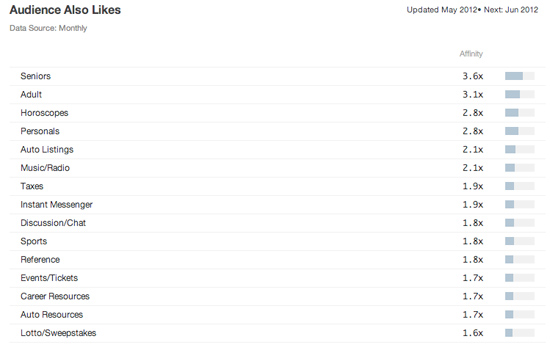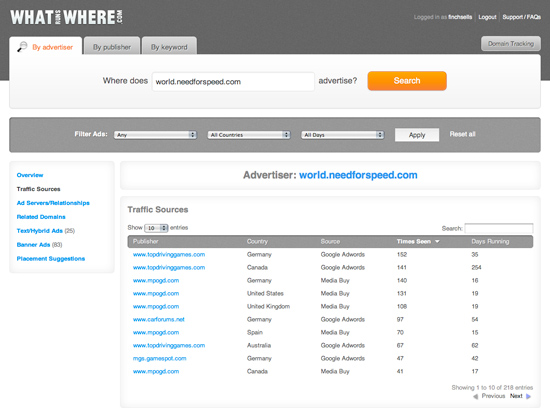Angle Creation: How to Juice Your Campaigns
Affiliate marketing is all about creating angles. It’s about playing cupid between merchant and customer, finding the common ground where the two parties can be brought together in profitable matrimony.
Creating angles is the part of affiliate marketing that I enjoy the most. It’s the brainsplurging stage where I sit down with a blank whiteboard, scribble the offer in the center, and then force myself to concoct dozens of incentives and selling points for that offer.
In my opinion, one of the main reasons for offer burnout is plain uninspired thinking. If 1000 affiliates choose an offer and run with the first angle they think off, there’s likely to be a bottleneck where most people lose.
If, however, you take the time to venture beyond the tried and tested angles, you can come up with some creative takes that will prolong the lifetime of your campaigns – and therefore your sanity.
What Makes a Good Angle?
Not all angles are created equal. Some have better hooks by nature when it comes to producing a desired action.
If you’ve ever read Ca$hvertising, you’ll be aware of the Life Force 8.
The Life Force 8 consists of eight very basic human needs that are hard-wired in to each and every one of us. They don’t need to be sold to us. They exist by default.
- Survival, enjoyment of life, life extension.
- Enjoyment of food and beverages.
- Freedom from fear, pain, and danger.
- Sexual companionship.
- Comfortable living conditions.
- To be superior, winning, keeping up with the Joneses.
- Care and protection of loved ones.
- Social approval.
A campaign angle can consist of just about any hook you can imagine. But to really get under the skin of your target market, the angle should embrace one or more of the Life Force 8 factors.
These aren’t wants. They are needs.
Let’s use my favourite example, RichMen.com, to show how angles can be constructed out of thin air.
Now, I’ve trolled the RichMen dating offer. I’ve spied thousands of ads, read hundreds of different ad copies. Through it all, I’ve been pretty vocal about the fact that I think most affiliates ‘phone in’ these ads. They rarely get their creativity out of second gear.
The default angle used by most affiliates is broody gold-digger seeks wealthy fancypants. While that may be a perfectly viable take on the offer, it’s also a bottleneck waiting to happen.
I’d say 80% of affiliates scramble to make coin from the same 20% of ideas.
They enter new verticals and go for the lowest hanging fruit, not appreciating that there’s a crush in the market because every other beginner is working on the same Plan A.
When you brainstorm your angles, it’s often a good idea to discard the first 2 or 3 ideas that come to mind for popular offers. Why? Because your first 2 or 3 ideas are going to lead you in to that bottleneck, in to the crush.
How to Easily Source New Angles
So, going back to RichMen.com, assuming we avoid the original gold-digger angle, how can we come up with new and exciting angles that other affiliates haven’t already beaten to death?
An easy method is to take your offer and stack it up against the Life Force 8.
Survival, enjoyment of life, life extension.
“Joining Rich Men… gives you the chance to meet a man who will get you out of the rat race, let you retire early, let you enjoy the peace and freedom you’ve earned for yourself.”
Enjoyment of food and beverages.
“Joining Rich Men… is your ticket to be wined and dined. No more scoffing takeaway with a derelict Stella swigger who answers you only in grunts. Drink the finest sparkling champagne in the city with a mouthwatering date!“
Freedom from fear, pain, and danger.
“Joining Rich Men… removes your fear of living from pay check to pay check, of wondering who is going to pay your 13 year old daughter’s University bill. Rest easy with a man who can take care of you!”
Sexual companionship.
“Joining Rich Men… will put the spark back in your bedroom. These men are confident passionate winners and the only thing bigger than their wallets is, well…”
Comfortable living conditions.
“Joining Rich Men… is a commitment to the life you’ve always wanted and deserved. Does this mansion look big enough for you? Can you imagine the walk-in closet space? Find a man who has room for your shoes.”
To be superior, winning, keeping up with the Joneses.
“Joining Rich Men… is a statement that you only settle for the best. Imagine the look on your colleagues’ faces when you introduce them to Mr. Right. That’s your Mr. Right.”
Care and protection of loved ones.
“Joining Rich Men… will give your child the best possible upbringing, and the best chances in life. It’s tough out there. Meet a man who’s already made it. You only deserve the best.”
Social approval.
“Joining Rich Men… will finally put an end to the smug gloating of your married friends. Bag a Prince Charming, fall in love, and watch how green it turns them! These guys are IMPOSSIBLE to find elsewhere.”
Now, some of these examples are a little crude, offensive, sexist, whatever. But my point is that by keeping the Life Force 8 in mind, you can easily brainstorm and stretch an offer in to multiple different forms.
Once you’ve chosen an angle that you’re happy with, you can then worry about getting the pitch of the copy right, not offending anybody, and adjusting your voice to the style of the market. That’s the difficult part, but it’s usually the step that comes before success.
Plug in Your Eyes and Ears
I often say that the many niches of affiliate marketing are trapped in the vision of a male twenty-something scumbag. That’s the typecast demographic of the average affiliate marketer, and we tend to see the world through our own eyes – for better or worse.
Most landing pages look and read as if they’ve been written by… well, the kind of person we’d expect to have written them. For dating offers aimed at 25 year old horny men, that can be a good thing. For parental offers aimed at 40 year old single mums, it’s definitely a bad thing.
So, this is an important point:
Angles exist outside your own mind.
Yes, they do. Some of the greatest selling angles known to man (or woman) are foreign to us because we are in radically different life situations.
For example, an affiliate marketer who has been sitting on his arse for 4 years, never having to commute, never having to engage in office politics… is going to slowly disconnect from the professional lifestyle. He’ll forget what it felt like to be struggling in that day job. It’s one of the reasons, in my opinion, why so many affiliate marketers start in the bizopp niche and then move in to new verticals over time.
How many blogs have you seen from ‘Warriors’ looking to make money by posting about their journey to make money? Some of them are relatively successful, because if a Warrior knows anything, it’s how to struggle for a living online. And that struggle sells. It’s not the shit they post about that drives the comments and sales, it’s the shared struggle of we’re in this together.
It’s easy for me to sit here and judge. But the reality is that just because a Warrior Forum moneymaking angle is alien to me, that doesn’t mean it’s any less valuable. Okay, it probably is less valuable. But the insight in to people is not.
It’s the same for all the Work at Home Mom blogs. I find them to be pretty weak imitations of the better marketing blogs out there. But then I have to bring myself back down to reality and remember that it’s not the marketing advice that’s being sold. It’s the lifestyle. It’s a shared sentiment that has no relevance to me, but is powerful nonetheless.
The WAHM gimmick is an angle that exists outside the scope of my own mind, until I wake up enough to focus on it, to view the market conditions from outside my own life situation.
You can’t afford to trap the world in your own eyes. Your eyeballs need to be hanging vacantly in the middle of the street, soaking up conversation and watching the shit out of people. You need to be listening to their needs, acting on their desires, and transmuting that information in to a body of work that smells less like the aforementioned twenty-something scumbag in disguise.
Good angle creation is rarely about agreeing with something, or holding any kind of positive or negative sentiment towards it.
It’s about spotting the way people see themselves and living vicariously through them for a few sweet seconds. If you can translate their least public thoughts in to ad copy and images on a page, you stand a good chance of controlling the next move.
Recommended This Week
Make sure you grab your copy of the newly released Premium Posts Volume 5. It’s the perfect tonic for anybody wanting to crack this industry on a shoestring budget.
Also be sure to check out Adsimilis, the official sponsor of Premium Posts Volume 5. Adsimilis is one of the most effective networks in the world for a CPA marketer to sink his teeth in to. They are particularly dominant in the dating vertical, with industry leading payouts. If you are a dating affiliate you need to be on Adsimilis. Simples.



Good idea, thank you so much for share Make money with cpa content locker cpacontentlocker.com